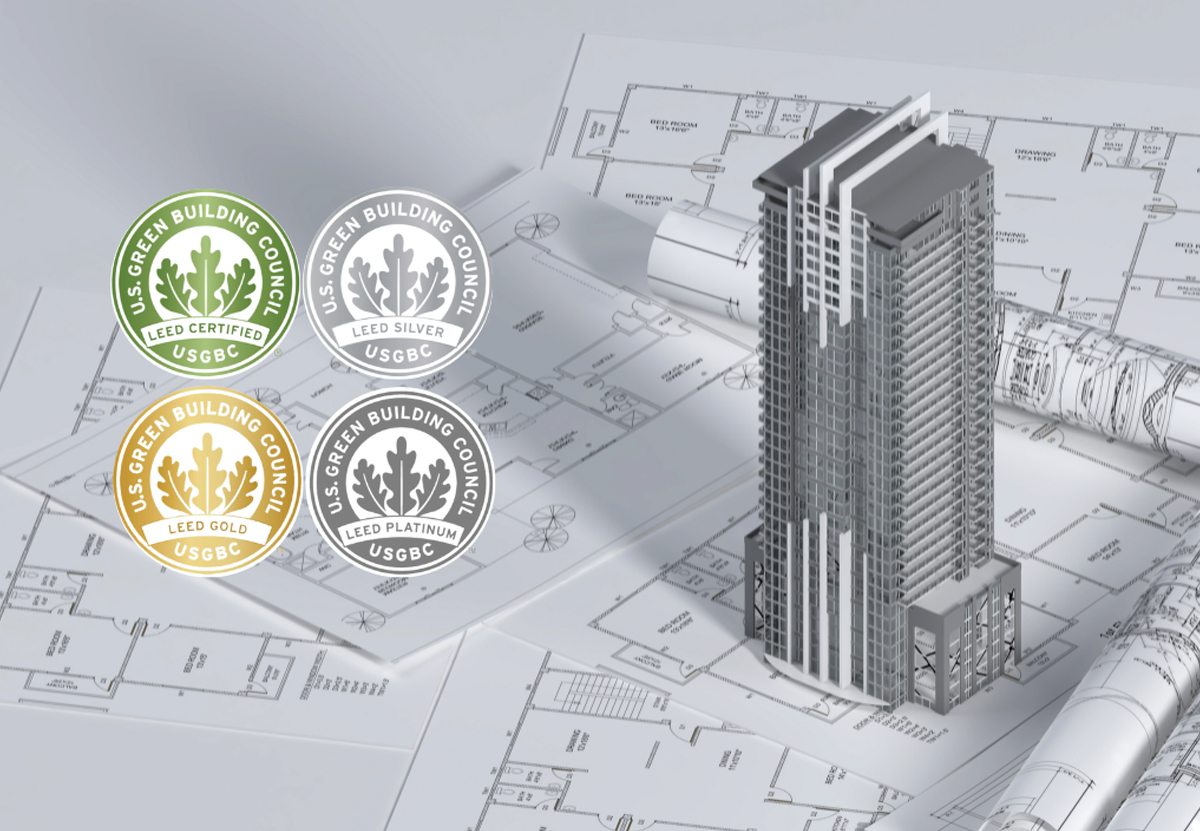
Have you ever wondered what makes a building truly green, beyond just energy-saving light bulbs or recycling bins? 🌿 That’s where LEED Certification comes in. Short for Leadership in Energy and Environmental Design, LEED is the world’s most recognized standard for sustainable building design and construction practices.
At its core, LEED Certification is about more than just checking boxes, it’s about shaping buildings that respect the planet and enhance the lives of the people inside them. From improving energy efficiency and water conservation to ensuring healthy indoor air quality, LEED sets a framework for smarter, cleaner, and more responsible development.
But how does a project earn this recognition? Through a points system that measures everything from site selection and materials and resources to innovation in green building strategies. Each decision, from design to construction, can contribute to achieving one of the four certification levels, proving a project’s commitment to environmental excellence.
In this guide, we’ll break down what LEED Certification really means, why it matters, and how it’s transforming the way we build for a more sustainable future.
So, what exactly is LEED Certification, and why does it matter in today’s world of modern construction and design? At its core, LEED, short for Leadership in Energy and Environmental Design, is a globally recognized framework that guides professionals in creating green buildings that are not only efficient but also environmentally responsible.
Think of it as a roadmap toward sustainability, where every decision in building design and construction contributes to a healthier planet and community. LEED provides a set of measurable criteria that evaluates how well a building performs across key areas such as:
- Energy efficiency: Reducing power consumption through smart systems, insulation, and renewable energy sources.
- Water conservation: Managing water use responsibly by incorporating low-flow fixtures, recycling systems, and drought-resistant landscaping.
- Indoor air quality: Ensuring comfortable and pollutant-free environments through proper ventilation and material selection.
- Materials and resources: Encouraging the use of recycled, regional, or sustainably sourced materials to minimize environmental impact.
These principles go beyond design, they influence how we live and work inside these spaces. Whether it’s an office tower, school, or healthcare facility, a LEED-certified building aims to lower costs, improve well-being, and support a more sustainable future.
Ultimately, understanding LEED Certification isn’t just about earning points or meeting requirements. It’s about embracing a mindset, a commitment to build responsibly, reduce environmental impact, and create spaces that truly make a difference.
Key takeaways:
LEED offers a global benchmark for green building and sustainable construction practices. It evaluates projects based on measurable factors like energy use, water conservation, and indoor air quality.
Achieving certification enhances long-term value, boosts occupant well-being, and reduces environmental impact.
As the demand for sustainable spaces continues to rise, embracing LEED isn’t just a choice, it’s a responsibility and an investment in our shared future. Whether you’re an architect, engineer, or building owner, now is the time to lead the shift toward smarter, greener design.
🌱 Start building for tomorrow, today. Explore how LEED principles can transform your next project into one that truly makes a difference, for people, the planet, and generations to come.
